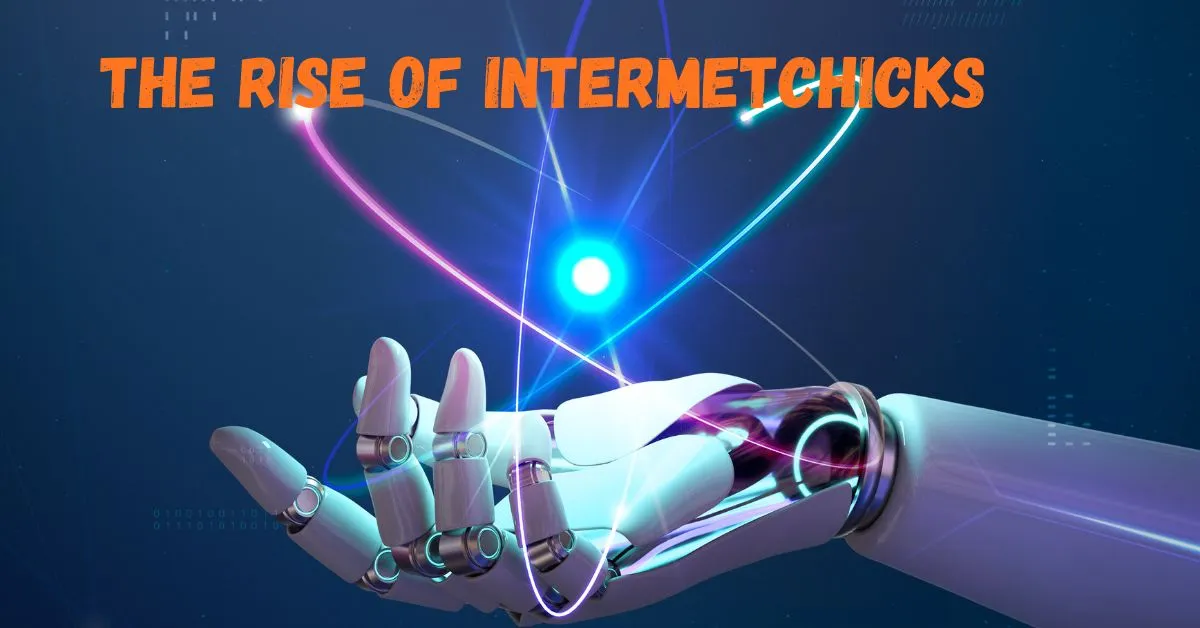If you’ve ever found yourself forming deep connections with someone online—sharing your dreams over late-night texts, bonding through voice notes, or finding comfort in a daily good-morning message—you’ve already stepped into the world of Intermetchicks.
The word might sound playful, like a mash-up of Internet and chicks, but it represents something far more profound: the evolution of emotional connection in a tech-driven world. Intermetchicks symbolize the new generation of emotionally intelligent digital communicators—people who nurture relationships, friendships, and even self-expression through screens, apps, and social networks.
In this article, we’ll explore how Intermetchicks are reshaping emotional intimacy, the psychology behind online relationships, and how technology, empathy, and AI have together rewritten the rulebook for human connection.
What Exactly Are Intermetchicks?
A New Term for a New Kind of Connection
At its core, Intermetchicks describes individuals (often women, though not exclusively) who build meaningful relationships primarily through digital communication. These relationships might be romantic, friendly, or purely emotional—but they all share one thing in common: they thrive in a virtual space.
The Intermetchick generation doesn’t see the internet as a barrier to connection—it’s their bridge. They communicate through messages, emojis, video calls, and digital gestures that carry just as much emotional weight as in-person conversations once did.
Think of someone who manages their relationship through WhatsApp voice notes, shares affection via shared playlists, or expresses love through an Instagram story. That’s the world of Intermetchicks—real emotions translated into a digital language.
Why It Matters
Online connection has become the new normal. Whether it’s long-distance relationships, friendships formed through gaming, or emotional support in online communities, people are proving that intimacy isn’t about proximity—it’s about presence.
The Psychology of Digital Intimacy
How Online Relationships Feel So Real
You might wonder how people can fall in love or form deep emotional bonds through a screen. The answer lies in psychology. When we communicate online—especially through consistent, emotionally rich messages—our brains activate the same mirror neurons that trigger empathy in face-to-face interactions.
Over time, our emotional responses become genuine. This is part of what communication scholars call the hyperpersonal model, where people sometimes feel even closer online than they do offline. Why? Because the digital format allows us to present our best selves, focus on emotional expression, and idealize others without the distractions of real-world flaws.
The Imagination Factor
Without physical presence, imagination fills the gaps. Every text, emoji, and pause carries meaning. Waiting for a reply can feel like waiting for a heartbeat. This emotional suspense can intensify connection, making digital love both thrilling and vulnerable.
Emotional Intelligence in Online Relationships
The New Rules of Empathy
In face-to-face communication, we rely on tone, eye contact, and body language to understand emotions. Online, those cues vanish. This means Intermetchicks—and anyone navigating virtual relationships—need digital emotional intelligence (EI): the ability to read, interpret, and express emotions through text, timing, and tone.
Here’s how emotional intelligence shifts in the digital world:
| Emotional Skill | Traditional Expression | Digital Adaptation |
| Empathy | Reading facial cues | Reading message tone, emojis, and response timing |
| Self-awareness | Managing real-time emotions | Reflecting before sending emotionally charged messages |
| Relationship management | Physical reassurance | Consistent communication, thoughtful replies |
| Social awareness | Observing group dynamics | Understanding online community energy and context |
| Emotional regulation | Calming through touch or presence | Using mindful pauses and boundaries online |
Reading Between the Lines
A delayed response might not mean disinterest—it could mean distraction, fatigue, or boundaries. Intermetchicks learn to decode silence as skillfully as they interpret words. That’s emotional fluency in the age of algorithms.
Technology’s Role in Modern Relationships
From Chatbots to Companionship
Technology has blurred the lines between human and artificial connection. AI chatbots, virtual assistants, and digital companions now simulate empathy—responding with warmth and understanding. For many, this creates a paradox: can artificial affection ever replace human emotion?
While AI can mirror empathy, it can’t replicate intention. Real emotion requires consciousness, vulnerability, and unpredictability—qualities that only humans bring.
Yet, these tools serve a purpose. They help people process feelings, combat loneliness, and explore self-awareness. In a sense, technology acts as a mirror—reflecting back the emotions we invest into it.
Algorithms and Affection
Social media algorithms decide which posts we see, shaping how we connect and who we connect with. Every “like,” “heart,” or “seen” notification triggers tiny hits of dopamine, making us crave digital validation.
Intermetchicks navigate this world with awareness. They know emotional energy can be drained by scrolling, ghosting, or comparing—but they also use tech as a tool for connection, creativity, and emotional expression.
How Intermetchicks Are Redefining Love
Love Without Borders
Love used to depend on proximity. Now, distance is just data. Intermetchicks fall in love across continents, time zones, and cultures. They share playlists instead of picnics, voice notes instead of dinners, and “goodnight texts” that cross oceans.
These digital relationships are asynchronous—they don’t rely on being in the same place or even the same moment. Each partner engages when emotionally ready, creating balance and independence.
Empowerment Through Emotional Control
Unlike traditional narratives where affection was often defined by physical presence, Intermetchicks define love by communication quality. They’re emotionally independent, choosing connection consciously rather than out of need.
That independence is power—it’s emotional autonomy in the digital world.
The Cultural Impact of Digital Relationships
Redefining Social Norms
Social media has democratized self-expression. Anyone can share their feelings, create communities, and express love openly. For Intermetchicks, it’s also a form of empowerment. Online spaces let people express themselves without judgment, experiment with identity, and connect beyond societal restrictions.
However, it’s not without risks. The same tools that enable freedom also open doors to manipulation, emotional performance, and the commodification of affection. Validation can become currency; attention can feel like approval.
Still, the rise of digital intimacy reflects a broader cultural shift toward emotional authenticity and inclusivity—values once limited by geography or gender roles.
Emotional Vulnerability and Digital Burnout
The Double-Edged Screen
The beauty of digital connection lies in accessibility—but so does its danger. Constant availability creates emotional fatigue. You might feel compelled to respond instantly or measure self-worth by how someone reacts online.
Intermetchicks often develop emotional resilience to handle this. They learn to set boundaries, manage online silence, and practice self-care when affection fades. Unlike physical breakups, digital disconnection—ghosting, unread messages, or algorithmic disappearance—can leave open wounds.
Over time, these experiences teach emotional adaptability. People become more self-reflective, creative, and self-reliant, transforming digital pain into personal growth.
The Future of Intermetchicks
Entering the Metaverse of Emotion
The next evolution of Intermetchicks will likely unfold in immersive emotional ecosystems—virtual reality (VR) and augmented reality (AR) spaces where avatars interact with genuine feeling. Imagine having a date in a virtual café that feels almost real, or sharing emotions through biometric sensors that sync heartbeats across devices.
As AI grows smarter, emotional analytics will track mood, tone, and compatibility, helping people communicate with precision. While some fear this reduces authenticity, others see it as an evolution—technology refining empathy, not replacing it.
The Heart Meets the Algorithm
Future relationships might be partially algorithmic but deeply emotional. When empathy, technology, and consciousness align, love won’t just survive—it’ll evolve. Intermetchicks will continue to lead this transformation, blending logic with feeling, code with compassion.
Conclusion:
In the end, Intermetchicks are more than a trend—they’re a reflection of how humanity evolves with technology. They embody emotional intelligence, adaptability, and the courage to feel deeply in a world of pixels and pings.
The truth is, connection has never been about where you are—it’s about how you show up. Whether through a glowing screen or a heartfelt glance, what matters most is the intention behind the interaction.
FAQs:
1. What does “Intermetchicks” actually mean?
It refers to people—often women—who build and manage emotional, romantic, or social relationships primarily through digital platforms like social media, messaging apps, or virtual spaces.
2. Are online relationships as real as offline ones?
Absolutely. Psychological studies show that online communication can trigger genuine emotional and neurological responses similar to face-to-face interaction. What matters most is honesty, effort, and emotional presence.
3. How can I build emotional intelligence for online relationships?
Start with empathy—try to understand tone and context behind messages. Practice patience, avoid impulsive replies, and remember that silence doesn’t always mean rejection. Communication clarity is key.
4. What are the risks of emotional dependency online?
Over-reliance on digital validation can cause anxiety, self-doubt, and burnout. Maintaining boundaries, offline hobbies, and mindful use of technology can help preserve balance.
5. What’s next for digital love and emotional technology?
AI and VR will make digital intimacy more immersive and realistic. The challenge will be keeping human values—authenticity, empathy, and emotional depth—at the center of it all.

